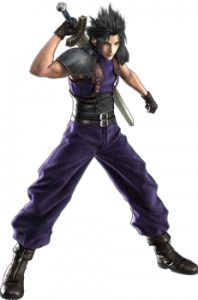The Pokémon Stadium games were always kind of niche titles. They aren’t really much on their own, and they depend on having other games to get the complete experience out of them.
No bonus points for guessing the gist of the next game in the series.
Pokémon Colosseum is basically the same as Stadium and Stadium 2. You take your team of monsters that you’ve caught and trained in your portable game and you have them battle it out in glorious 3D. There are a couple of differences in the game mechanics, but they don’t really matter much. The differences I was concerned about were of a different variety.
The big one for me was that the Nintendo 64 versions supported the Transfer Pak, a device that let you plug the game directly into one of your controllers. Which, I admit, doesn’t sound all that exciting, but those games gave you some fairly powerful management abilities as a side effect, which was actually really awesome because the management abilities in the game were nearly nonexistent.
Colosseum, though, uses a cable to connect your Game Boy to your Game Cube. You forgo lots of your management abilities with this new arrangement, for some reason, but you do get slightly better management capabilities in the portable part, so that’s pretty much a wash.
One of the things that is slightly different about this game, other than the supremely-annoying announcer going away, is the removal of the mini-games. It’s not a great loss or anything, the games weren’t anything special but were kind of a nice diversion. But they’ve been replaced with something a little more substantial, a mini-RPG.
The RPG is kind of like a watered-down version of the full Game Boy game. You take your guy on a little quest to rescue Pokémon who have had their ‘hearts closed’ by some evil organization, which makes them all shadowy and evil. Your job is to find them, catch them, and purify them… while stopping the evil organization if you have the time.
I got kind of a bit of play out of the Battle Mode of this game, but didn’t really make it too far. This is mostly because the game didn’t really offer me anything new over the last two games. Yeah, the tag-team battles were nice, and the rewards were kind of neat, if I would have taken the time to get them. But this game is a lot more fun to play against an actual person instead of the computer, and since most of my friends that have Game Boys didn’t actually get games that were compatible with it, that wasn’t really going to happen.
But, there’s that RPG mode!
The RPG modes of the Game Boy games have always been about roaming the world, catching wild pokémon, and assembling them into an awesome team. In this one, though, you just fight random people who may or may not have a ‘corrupted’ pokémon for you to rescue. So you have to kind of assemble your team out of this hodgepodge of creatures that you rescue, which is kind of OK. Except that you can’t really use them right away. See, when you get the pokémon, they don’t know any worthwhile moves and they won’t gain any experience and no experience = they don’t get any stronger. So what you end up doing is catching a pokémon from a trainer, then use it in battles, but it can’t really do anything. Then, after it wins so many fights, then you can use it to its fullest. But the thing is, it takes quite a while for them to get to that point, and there are lots of the little buggers to catch.
What all that means is that you’re going to spend a lot of time collecting your ‘corrupted’ pokémon and making them fight so that you can purify them so you can assemble your crackerjack team. But that’s ridiculously tedious, and it was something that I could only do for so long before I gave up on the game. According to the strategy guide that I would eventually get, that was about halfway through the thing, but I’ve tried, and I just don’t have the energy to get back into it… And I probably won’t for a while to come.
